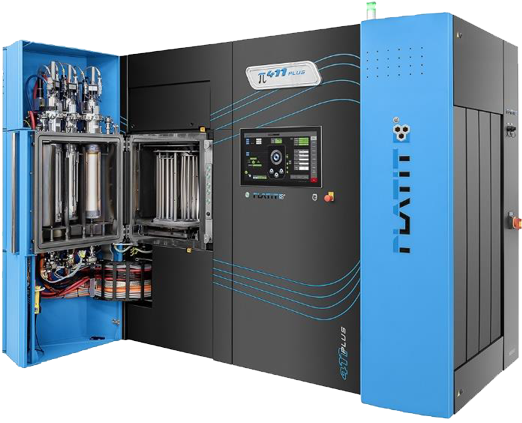New Technological Developments at PannonPLATIT
PannonPLATIT has set the satisfaction of its partners as the most important goal.
We have continuously developed our machines, the materials used and our personal skills for a decade and a half.
In 2019, the 15th year of our foundation, we made our biggest investment and focused on the installation of the Pi411PLUS coating system, which is the flagship of PLATIT, Switzerland. In addition to expanding capacity, the most important goal is to be able to deposit the most modern, so-called hybrid coatings.

Hybrid coatings have been developed by PLATIT in recent years as a combination of ARC and sputtering technologies (SCiL®).
- The ARC process produces excellent adhesion, a higher density, hardness and thus high wear resistance for the layers.
- The sputtering process produces a smoother layer surface with lower roughness.
The hybrid coatings combine the advantages of the two methods.
- The two layers (Zr (C) N and TiB2) that are best for machining aluminum are deposited in a double.
- ta-C, the hard DLC3 layer gets very good adhesion thanks to the LACS technology and has a roughness below Sa = 50 nm. It is primarily used for components subject to high wear and for micro tools.
- Boron-containing layers enable the toughness to be improved at the same time as the hardness is increased. (e.g. BorAC, which has had the greatest success so far with hobbing)
- High entropy layers contain min. 5 essential elements (Ti, Al, Cr, Si, B, C) and represent a new era of PVD coating technology. They are primarily used for processing hardened and high-alloy materials (e.g. BorAX)
The modularly expandable system enables us to develop our own layers, products. Thanks to its flexblin programmability, we offer solutions that can be adapted to a variety of individual requirements and applications of our customers.
